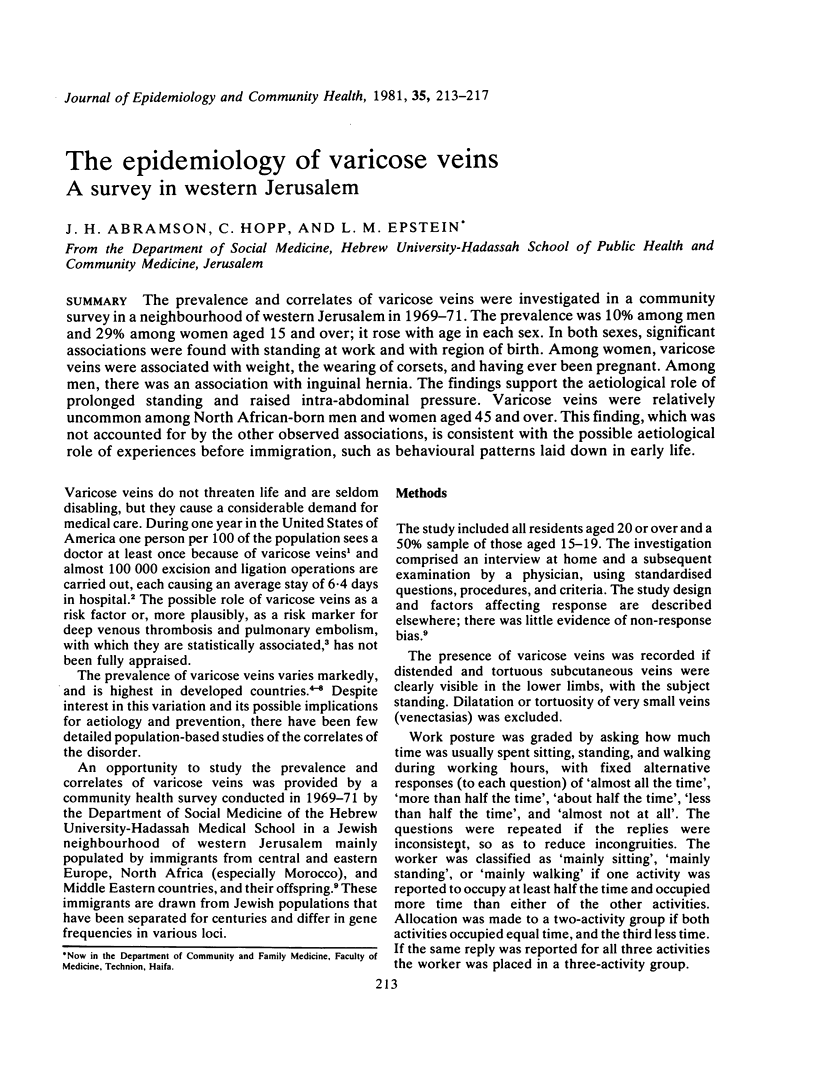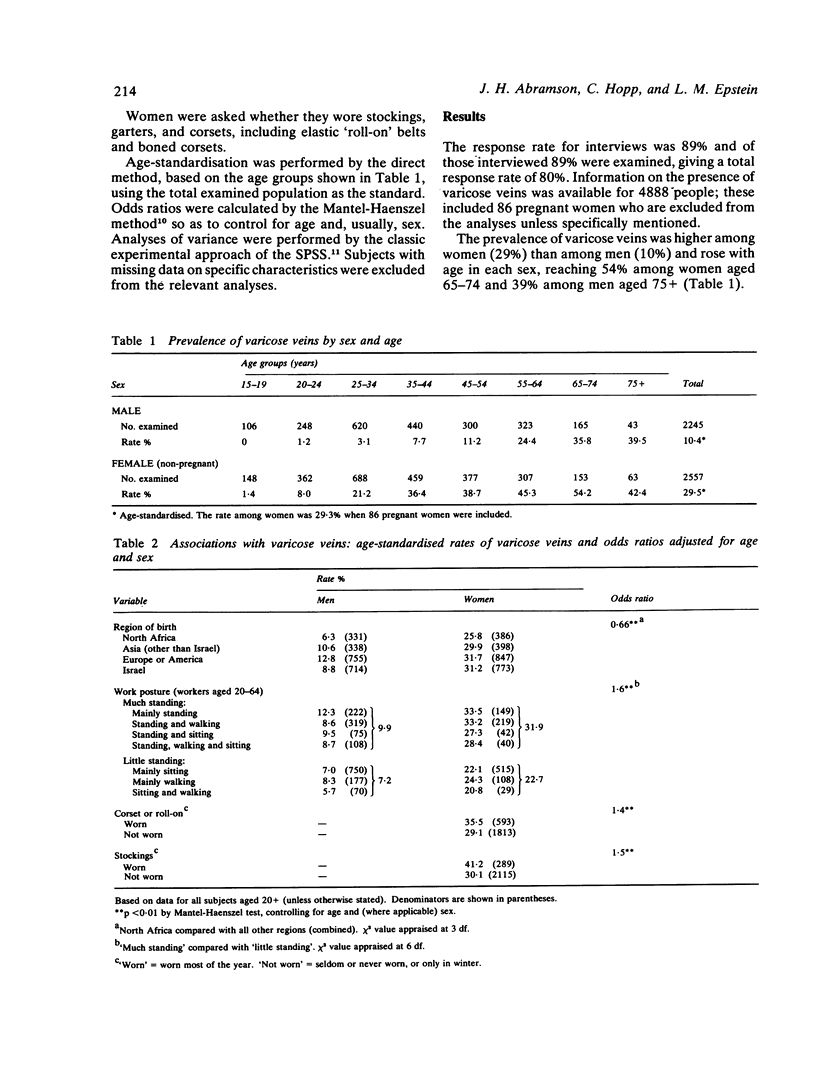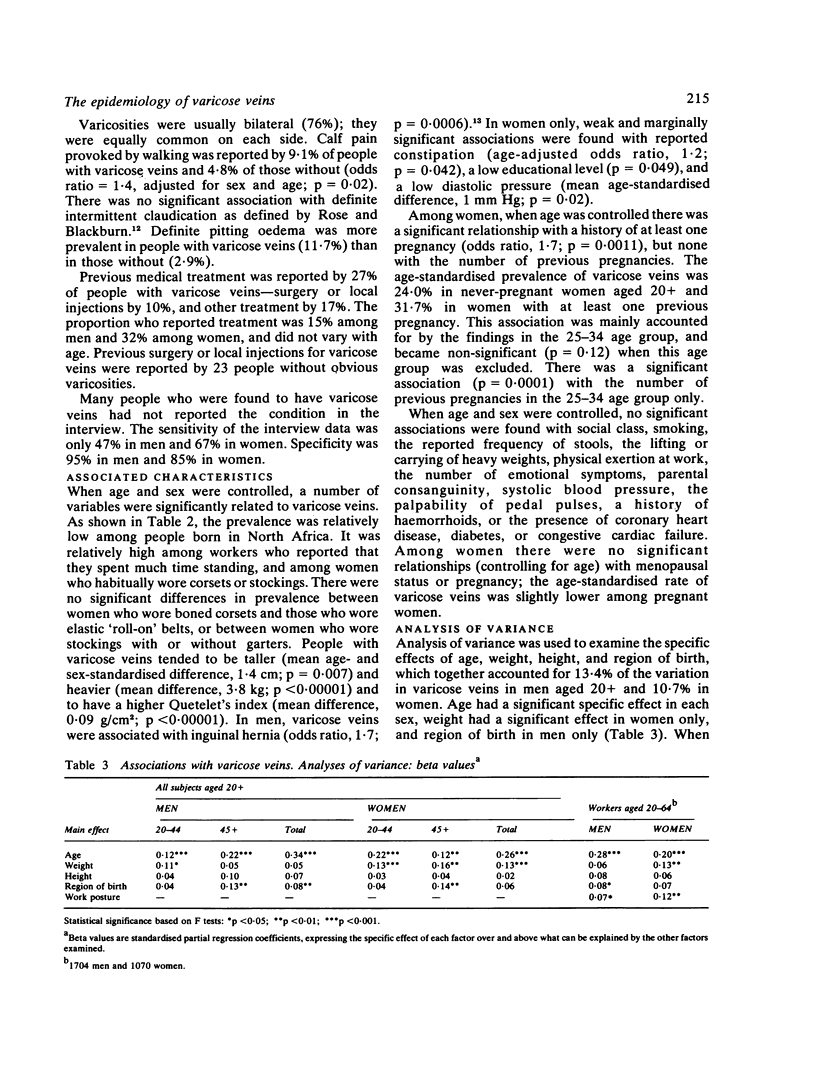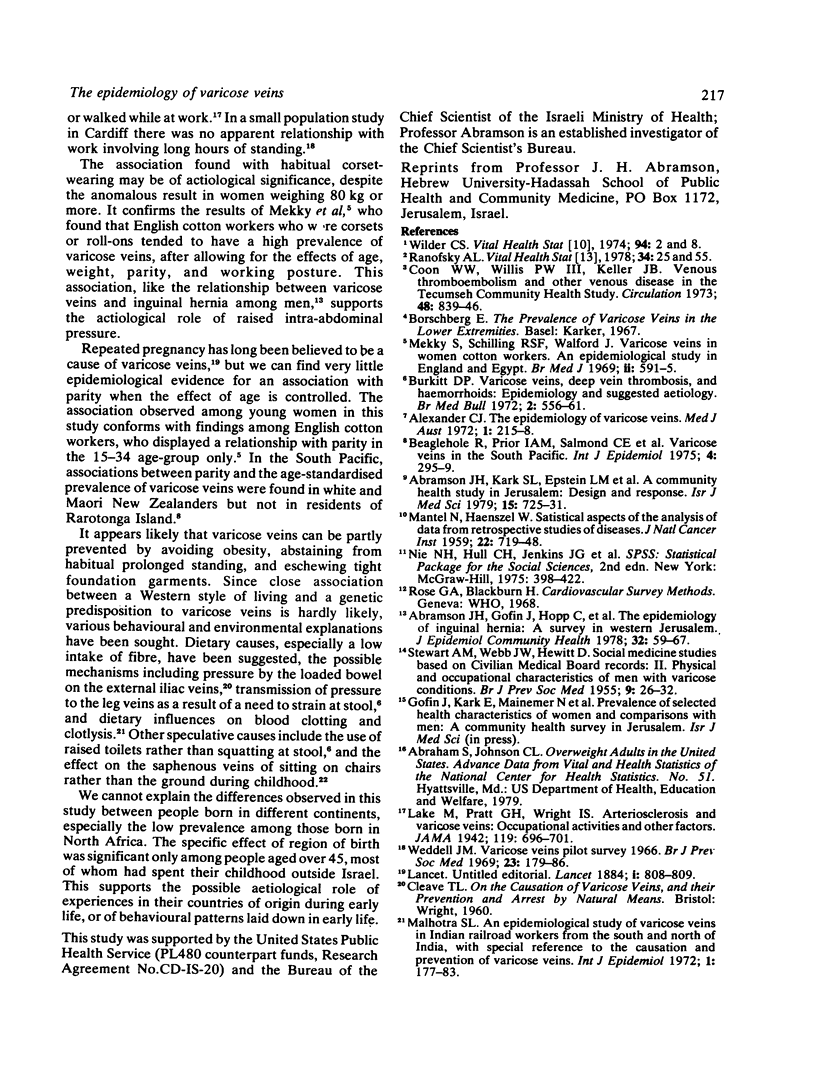Abstract
The prevalence and correlates of varicose veins were investigated in a community survey in a neighbourhood of western Jerusalem in 1969-71. The prevalence was 10% among men and 29% among women aged 15 and over; it rose with age in each sex. In both sexes, significant associations were found with standing at work and with region of birth. Among women, varicose veins were associated with weight, the wearing of corsets, and having ever been pregnant. Among men, there was an association with inguinal hernia. The findings support the aetiological role of prolonged standing and raised intra-abdominal pressure. Varicose veins were relatively uncommon among North African-born men and women aged 45 and over. This finding, which was not accounted for by the other observed associations, is consistent with the possible aetiological role of experiences before immigration, such as behavioural patterns laid down in early life.
Full text
PDF




Selected References
These references are in PubMed. This may not be the complete list of references from this article.
- Abramson J. H., Gofin J., Hopp C., Makler A., Epstein L. M. The epidemiology of inguinal hernia. A survey in western Jerusalem. J Epidemiol Community Health. 1978 Mar;32(1):59–67. doi: 10.1136/jech.32.1.59. [DOI] [PMC free article] [PubMed] [Google Scholar]
- Abramson J. H., Kark S. L., Epstein L. M., Hopp C., Peritz E., Makler A. A community health study in Jerusalem. Design and response. Isr J Med Sci. 1979 Sep;15(9):725–731. [PubMed] [Google Scholar]
- Alexander C. J. The epidemiology of varicose veins. Med J Aust. 1972 Jan 29;1(5):215–218. doi: 10.5694/j.1326-5377.1972.tb46766.x. [DOI] [PubMed] [Google Scholar]
- Burkitt D. P. Varicose veins, deep vein thrombosis, and haemorrhoids: epidemiology and suggested aetiology. Br Med J. 1972 Jun 3;2(5813):556–561. doi: 10.1136/bmj.2.5813.556. [DOI] [PMC free article] [PubMed] [Google Scholar]
- Coon W. W., Willis P. W., 3rd, Keller J. B. Venous thromboembolism and other venous disease in the Tecumseh community health study. Circulation. 1973 Oct;48(4):839–846. doi: 10.1161/01.cir.48.4.839. [DOI] [PubMed] [Google Scholar]
- MANTEL N., HAENSZEL W. Statistical aspects of the analysis of data from retrospective studies of disease. J Natl Cancer Inst. 1959 Apr;22(4):719–748. [PubMed] [Google Scholar]
- Malhotra S. L. An epidemiological study of varicose veins in Indian railroad workers from the South and North of India, with special reference to the causation and prevention of varicose veins. Int J Epidemiol. 1972 Summer;1(2):177–183. doi: 10.1093/ije/1.2.177. [DOI] [PubMed] [Google Scholar]
- Mekky S., Schilling R. S., Walford J. Varicose veins in women cotton workers. An epidemiological study in England and Egypt. Br Med J. 1969 Jun 7;2(5657):591–595. doi: 10.1136/bmj.2.5657.591. [DOI] [PMC free article] [PubMed] [Google Scholar]
- STEWART A. M., WEBB J. W., HEWITT D. Social medicine studies based on civilian medical board records. II. Physical and occupational characteristics of men with varicose conditions. Br J Prev Soc Med. 1955 Jan;9(1):26–32. doi: 10.1136/jech.9.1.26. [DOI] [PMC free article] [PubMed] [Google Scholar]
- Weddell J. M. Varicose veins pilot survey, 1966. Br J Prev Soc Med. 1969 Aug;23(3):179–186. doi: 10.1136/jech.23.3.179. [DOI] [PMC free article] [PubMed] [Google Scholar]


